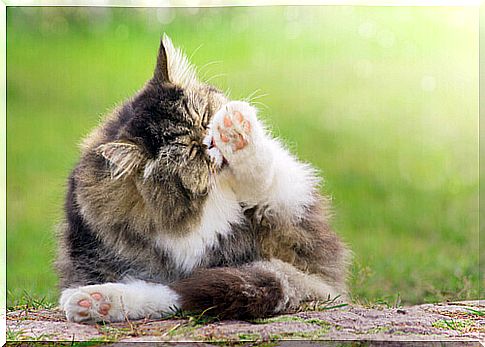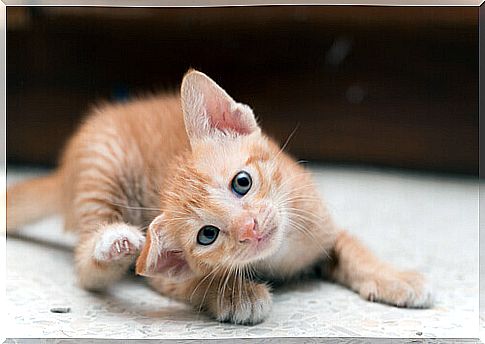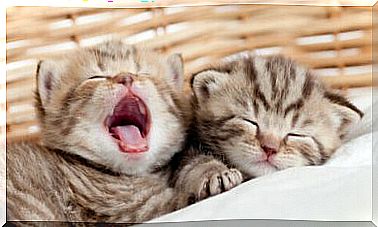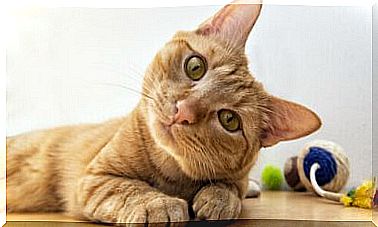Allergies In Cats: How Do They Manifest Themselves?

Allergies are responses of the immune system to substances that do not in themselves cause damage to the body. The most common allergies are to pollen, certain types of food, dust mites, molds, insect bites, etc. In this article we are going to find out which are the most common allergies in cats and what are the main symptoms they show.
Allergies can occur at any age. Genetics and the environment in which you live play an important role in the development of allergies.
Food allergies in cats
Generally, food allergies in cats are caused by certain proteins found in meat, fish or dairy products. To detect a food allergy, there are tests that our vet can provide. You can also have the cat follow a special diet to identify which food is bad for him and eliminate it from his diet.
Symptoms of food allergies in cats are often associated with skin problems (itching or redness) or intestinal problems (vomiting or diarrhea).

Allergies in cats: skin problems
Skin problems in cats can be due to parasites (mites, fleas, ticks), infections, fungi, skin diseases or, indeed, allergies. Itching is the most common symptom. The cat can get hurt by scratching constantly to relieve the itch they feel. Other symptoms of skin allergies are:
- Redness of the skin.
- Dry or flaky skin.
- Areas of hairless skin. Hair loss, due to excessive licking by the cat, is one of the most common skin allergies caused mainly by the unbearable itching that the animal experiences.
- Skin lesions. Wounds and scabs are other signs that we have an allergy in the skin or coat. Excessive scratching can cause your cat to have skin ulcers. Typically, they are noticeable in the face or neck area.
- Inflamed skin.
- Sneezing.
- Cough.
- Ocular secretions.
- Nasal secretions.
- Skin infections. Allergies in cats can be caused by secondary infections of the areas where the skin is broken.

If you observe one or more of these symptoms, we advise you to consult a veterinarian immediately. Your cat may have an allergy, be stressed, or have a disease that exhibits the same symptoms.
The eosinophilic granuloma complex
The eosinophilic granuloma complex is a group of lesions on the cat’s skin and mouth caused by allergies. This “complex” includes three types of lesions: eosinophilic plaques, indolent ulcer and eosinophilic granuloma.
- Eosinophilic plaques are bright pink, hairless patches of skin usually found on the abdomen and thighs. Generally, they are very itchy.
- The indolent ulcer appears on the cat’s lip and is usually not painful.
- Eosinophilic granuloma is a small lump that can appear on the cat’s chin, lower lip, or pads.
How to treat allergies in cats?
The best way to treat allergies in cats is to remove the allergen (what causes the allergy) from the environment in which they live. Sometimes, it is impossible to completely eliminate the presence of the allergen and some cats may also have respiratory problems. In these cases, the vet may prescribe medications to relieve the symptoms of the allergy.
The best ways to prevent allergies in cats is to keep the places they live in clean and have them eat a healthy diet. Thoroughly clean their litter boxes, their toys, the blankets they rest on and feed them quality food.
Feline asthma
Feline asthma includes diseases that affect the lower respiratory tract, from the bronchioles to the lungs. It is an inflammatory process that obstructs the airways and obstructs the passage of air. Feline asthma is also caused by environmental factors such as pollution, tobacco smoke, mold, dust mites, etc.
Siamese cats are one of the breeds most affected by this disease. Additionally, these cats are more likely to have allergies.









